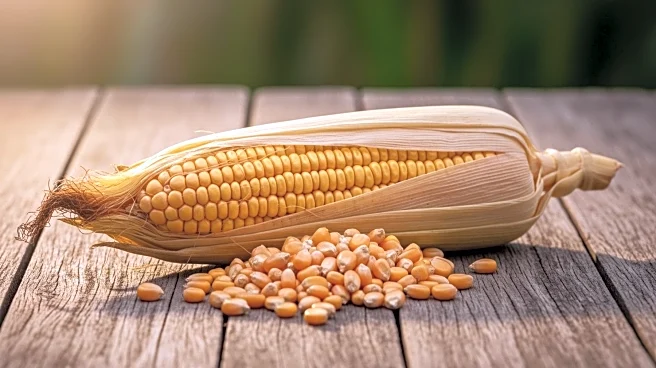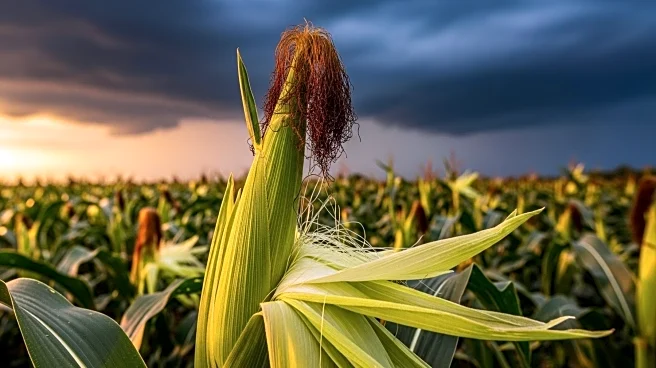What's Happening?
The USDA's September Crop Report has revealed a slight reduction in U.S. corn yield estimates, now projected at 186.7 bushels per acre. This adjustment comes alongside an unexpected increase in acreage, up by 1.4 million, surpassing the USDA's June survey by 3.5 million acres. Despite these changes, the report forecasts a rise in U.S. corn exports by 100 million bushels, contributing to positive market sentiment. Corn prices have shown strong momentum, closing at $430, marking a second consecutive week of gains. Soybeans also experienced a 19-cent rise, reflecting favorable market conditions. However, early harvests in states like North Dakota have reported lower yields due to adverse weather conditions such as frost, drought, and disease pressure.
Why It's Important?
The reduction in corn yield estimates and the increase in acreage have significant implications for U.S. agricultural markets. The rise in corn exports suggests strong international demand, which could bolster the U.S. economy and support farmers facing challenging conditions. The positive price movements in corn and soybeans indicate market optimism, potentially benefiting stakeholders in the agricultural sector. However, the lower yields reported in some states highlight ongoing challenges posed by environmental factors, which could affect overall production and profitability. The USDA's report serves as a critical indicator for farmers and investors, guiding decisions in commodity trading and agricultural planning.
What's Next?
Looking ahead, the agricultural sector must prepare for potential weather-related disruptions, particularly with the forecasted La Nina conditions in 2026. These could lead to droughts in South America and the U.S., impacting global commodity markets. Farmers are advised to stay informed and consider strategies to mitigate risks associated with adverse weather patterns. The USDA's ongoing assessments and updates will be crucial in navigating these challenges and ensuring market stability.
Beyond the Headlines
The USDA's report underscores the importance of adaptive strategies in agriculture, as environmental factors increasingly influence crop yields and market dynamics. The potential for drought conditions highlights the need for sustainable practices and investments in technology to enhance resilience. Additionally, the report's findings may prompt discussions on policy measures to support farmers and ensure food security amid changing climate conditions.













